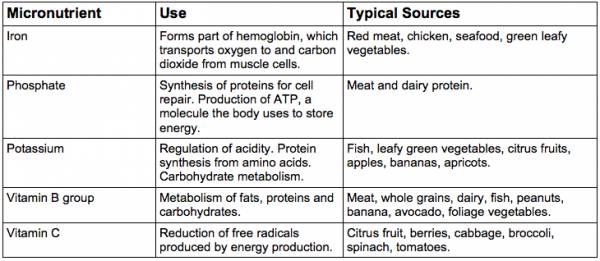If you are in the Northern Hemisphere, the cycling racing season has started and you will probably be working towards some of your major goals with training programs – working out your logistics and a race nutrition plan. If you are in the Southern Hemisphere, you might be working into your winter training or traveling overseas to compete. If you are a recreational cyclist, then there are plenty of ways to enjoy your sport in summer and winter.
Regardless of your training goals, we hear much about the right blend and frequency of sugars, fats, and proteins to achieve top performance or help with recovery after training or an event. But that’s not the topic of my thoughts this week. I want to go deeper.
I have a sports physiology book on my bookshelf. It’s very detailed and shows pages of numerous chemical reactions and movements of ions and substrates around the body that are required to take place just to initiate movement demanded by the central nervous system and complete muscle contractions to push those pedals around. The thing that strikes me is that fuel and the ability to take in oxygen is only part of the story. We seem to spend a considerable amount of time debating the pros and cons of different fuel mixes and measuring VO2 max statistics to assess performance. Yet, in order to generate energy and movement so many underlying processes have to function properly. It’s just amazing.
Whatever fuel is used, the body has to generate molecules of ATP (adenosine triphospate) within the muscle. ATP is then used by the enzymes within the muscle filament to enable contraction. Transport of sugars and free fatty acids, which are the major fuels in an endurance sport like cycling, is enabled throughout the body by diffusion through the cell walls and supported by a number of proteins. The very signal that initiates the muscle contraction is produced by a chemical released from the neuron that subsequently changes the balance of sodium and potassium across the muscle fiber cell.
These complex and interrelated reactions that cause muscle contraction are dependent upon the right number of chemicals being supplied in the right proportions. In order to burn the fuel and keep the body working, numerous vitamins and minerals are required. A deficit in one area could slow down one or more chemical reactions and therefore limit your performance in competition or recovery after training. Unlike fats and sugars, which are predominantly fuels, the processes that are required to burn vitamins and minerals are dependent upon proteins and the actual presence of the vitamins and minerals. So, it is these vitamins and minterals that act as enablers for the body to function effectively.
Lets take a look at a few and see what they are used for and where they come from:

In a training scenario, we train to overload in order to encourage the body to regenerate, adapt, and get stronger. The more effective the overload the more effective the adaptation and recovery. The overload requires transport and metabolism of fats, sugars, and proteins, which are oxidized by the oxygen-carrying hemoglobin.
High intensity exercise will produce a substance called pyruvate from glucose, and this in turn produces lactic acid, which dissociates to form lactate and H+ (hydrogen) ions. The H+ ions create an acidic environment that causes discomfort by stimulating nerve endings, and it slows down energy production by interfering with some of the reactions that cause muscle contraction. Potassium helps to regulate this acidity.
 Effective recovery requires removal of free radicals and generation of proteins for cell repair and regeneration. Similarly, during an event, effective delivery and metabolism of fuel and removal of waste products is required. So in order to have an effective training regime that delivers quality results, many micronutrients are required. These are delivered by ensuring an abundant supply of the various sources in the diet.
Effective recovery requires removal of free radicals and generation of proteins for cell repair and regeneration. Similarly, during an event, effective delivery and metabolism of fuel and removal of waste products is required. So in order to have an effective training regime that delivers quality results, many micronutrients are required. These are delivered by ensuring an abundant supply of the various sources in the diet.
The layered diagram shows a simple model of how this all fits into cycling, whether this is for fitness or competition. Each layer builds on the previous layer in order to create success. Underpinning it all is the need for the micronutrients in our food to ensure that fuel can be processed effectively to meet training and event needs.

The are many claims of improved performance by using different mixes of sugars and fats for cyclists, but it’s the small things that can make a difference.
References:
1. Mark Hargreves and Lawrence Spriet, Exercise Metabolism (Human Kinetics, 2006).
2. W. Larry Kennedy, Jack H. Wilmore and David L. Costill, Physiology of Sport and Exercise (Human Kinetics, 2012).
3. Angela Francis and Darren Tebbenham, Master Trainer Course Manual (European Institute of Fitness, 2010).






